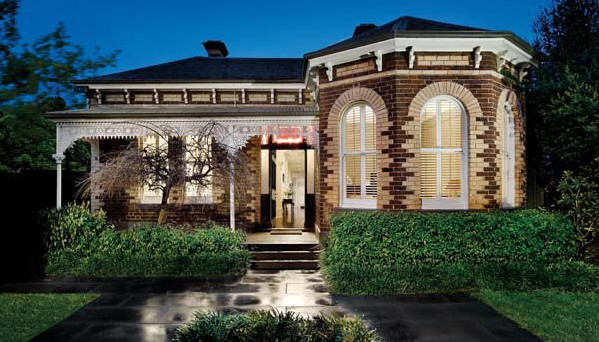Are you in the market for a new property? You’re probably thinking about those age-old questions that pop up for most buyers during the property search. Do you buy vacant land and build, renovate an existing property to live in or flip while the market’s hot, or demolish and start over?
In some cases, the answer will be a straightforward no-brainer, but in others it’s likely to be way more complex. They key thing to remember is that you need to be clear about your plans for the property before you sign on the dotted line.
We’ve put together a basic rundown of what you’ll need to look out for when considering your options.
The case for renovating

A renovation can make excellent sense. Reasons to renovate include:
- The house is in a great location and has ‘good bones’, but needs some work to make it more comfortable and liveable.
- You love the home and want to retain its character and some of its original features.
- It has historic value and is protected by a heritage overlay – in which case you may be restricted on what you can do with your building.
- You want to live in the home, and would be able to do so while renovating it in stages. Or on the other hand, you could rent it out while drawing up plans for the changes you want to do.
- Rebuilding is beyond your budget and would be more expensive than renovating.
- You bought it as a rental or to flip. In this case, it’s important not to over-capitalise and do only enough work to make a profit. This means you need to research the market to get an idea of what will appeal to potential buyers or renters. That hot pink feature wall you secretly love is probably not the way to go here – neutral is best.
- You want to live in your dream suburb in an excellent school zone for your children. To gain entry, you buy a property below the median price that you can then rent out until you can afford to renovate, or the kids are about to start school.
If you do choose to renovate, it’s important to conduct due diligence, including:
- Ask your solicitor to review the vendor statement, or speak to your local council to find out about restrictions.
- Complete building and pest reports to make sure the building is structurally sound.
- Check with your local council regarding overlays and planning restrictions, particularly if it is in a heritage area.
When might renovation not be the answer?

Sometimes renovating is not feasible. For example, where there is major structural damage, or the full extent of wear and tear is unknown, which could potentially lead to cost blow-outs.
In these situations, you might find it a better option to demolish the home and rebuild.
A detonate and rebuild situation
The good thing about knocking down and rebuilding is that you get to create the home you want. You choose the style and orientation, and you can make it as comfortable and energy efficient as your budget allows. And if you secure a fixed-price contract, you have more idea of what it’s going to cost upfront than you might with a renovation.
Buying an average or older suburban home and knocking it down might also be your only option in city areas where vacant land is scarce.
Rebuilding does come with significant costs though, such as demolition and removal. You’ll also need to find another place to live while the work is being carried out, which unless you can stay with family rent-free, will add to the total cost. However, a straightforward knock-down and rebuild could still be less expensive than a complex or major renovation.
Due diligence steps:
- Building and pest reports won’t be required if you are knocking down the property.
- Some regions have strict vegetation overlays – check with the local council first. As an example, Nillumbik Shire in Melbourne’s north-east green belt has seven significant landscaping overlays, depending on location.
- Check for planning restrictions, such as a heritage overlay.
- Find out about any preservation rules. For example, in Queensland, character preservation rules stipulate that if the house was built before 1946, it cannot usually be removed.
- Discuss lending requirements with your finance provider or mortgage broker. When you knock down a dwelling, the lender will generally insist you reduce your loan to value ratio (LVR) to a maximum of 80% of the land value. This means you’ll need to make a lump sum principle repayment onto the loan before you get the go-ahead to demolish. By reducing the LVR to 80%, the bank isn’t exposed and there’s no need for lenders mortgage insurance.
Other things you’ll need to take into account include the streetscape and the quality and character of the existing neighbourhood. For example, if the street is full of high-density apartment blocks, that may affect the appeal of your property.
What about subdividing?

Subdividing a property can create a good income stream, but you need to carefully weigh up the costs and benefits.
Here’s what to consider as part of your due diligence:
- Land size – in Victoria for example you should generally allow for 300m2 per lot, but always check with the local council.
- Trees – check for any vegetation overlays.
- Restrictions – check for planning or heritage restrictions.
- Overlays – for instance in parts of Queensland there may be flooding overlays that can impact on a subdivision.
- Location – you’ll pay a premium for them but corner blocks can provide the advantage of separate street frontage and access for two properties.
- Feasibility – you should examine the feasibility of a development, such as by checking what comparable properties sold for and so on.
Other issues to consider include land slope, as a level or gently sloping block generally costs less to develop than a steeper one, and location of trees and power poles on nature strips could prevent separate driveway entrances.
Ultimately, whether you’re looking for a knock-down and rebuild in the suburbs, or an opportunity for a subdivision, the important thing is to be thorough and do your due diligence before you act.
It can get complicated. Each state, each council, each house title can have different regulations and requirements, so get out and speak to the experts, or better yet hire one who will find the property that meets your needs, organise inspections, inform you of restrictions, and negotiate the purchase on your behalf.
Good luck!
Image Source: Complete Home, Latitude 37, Subdivide Design and Rebuild

